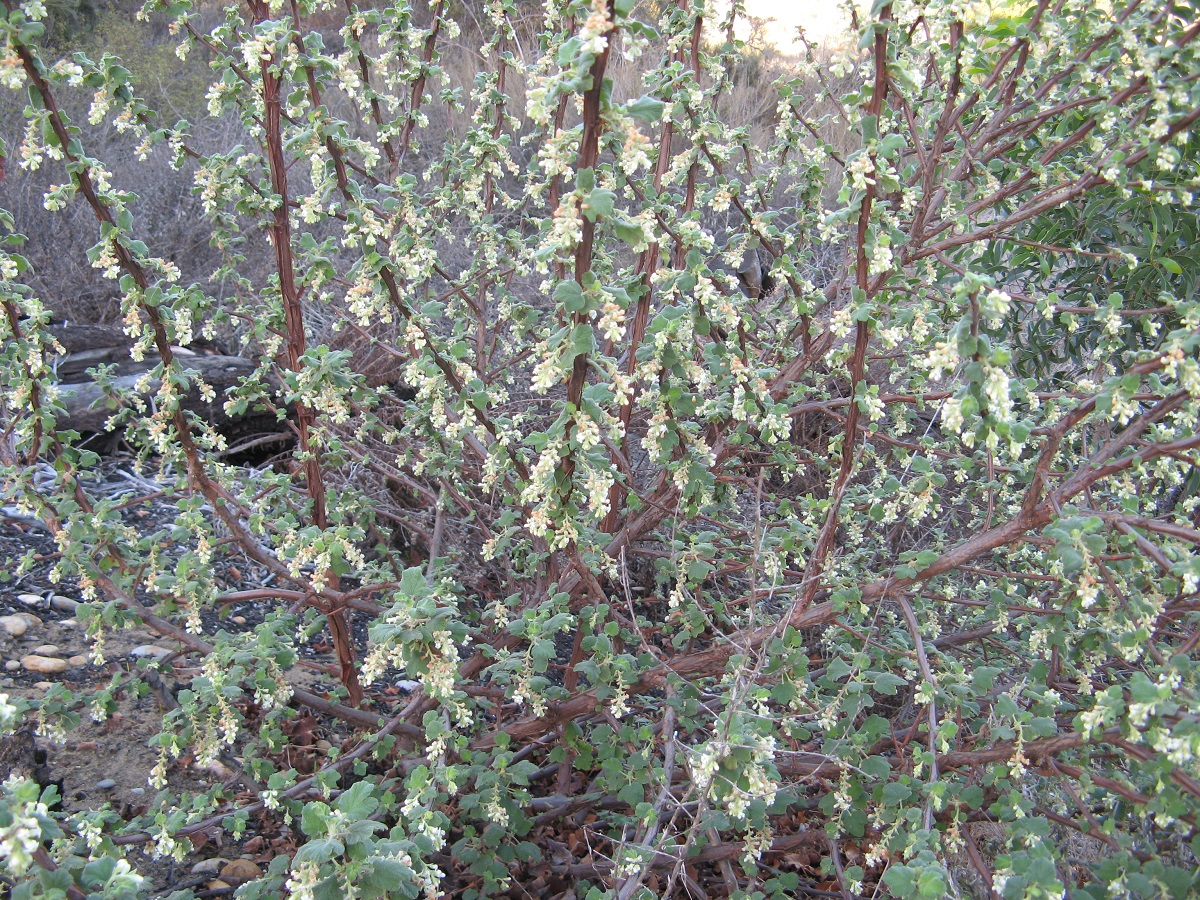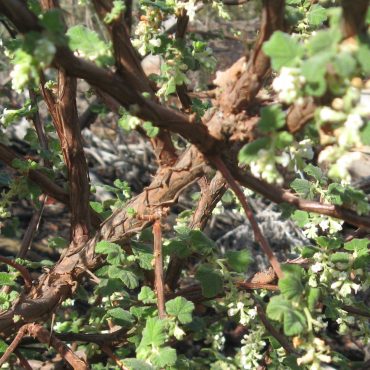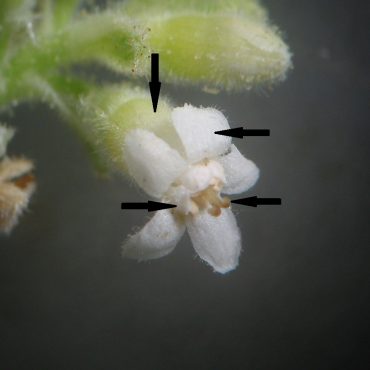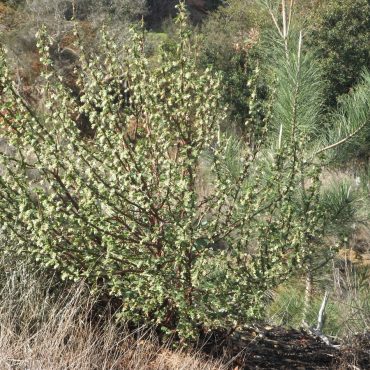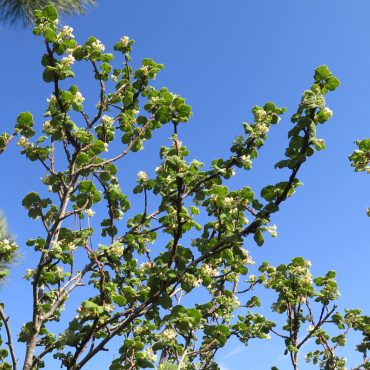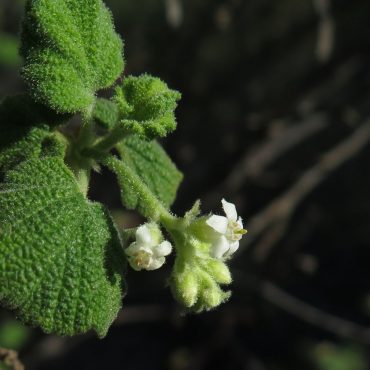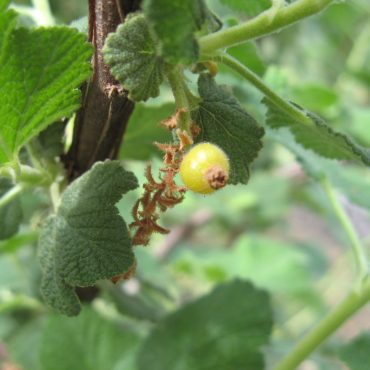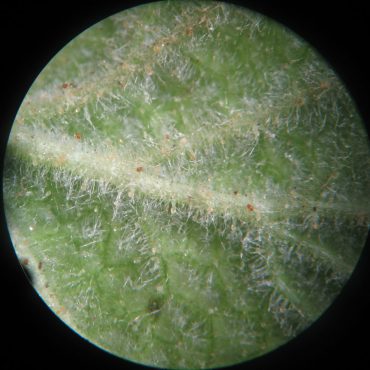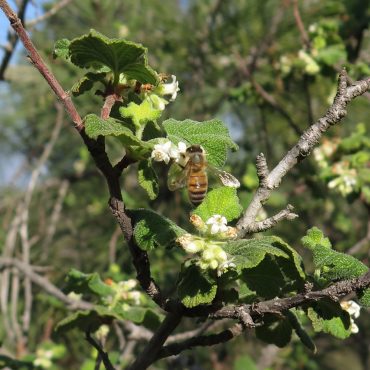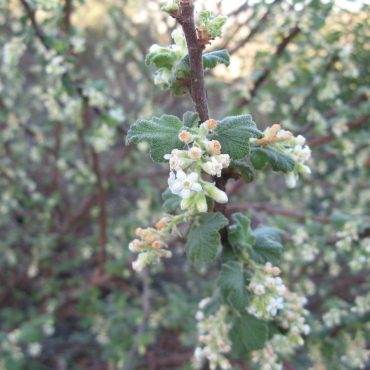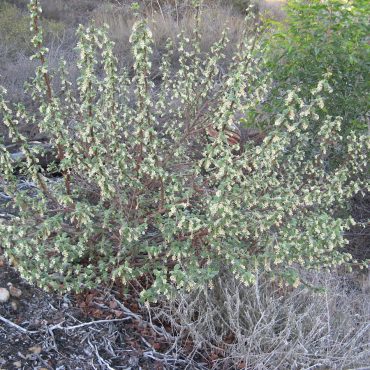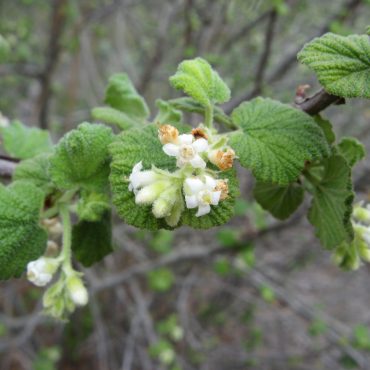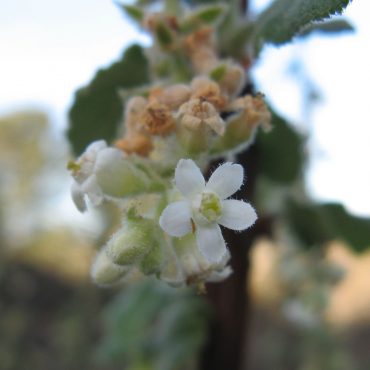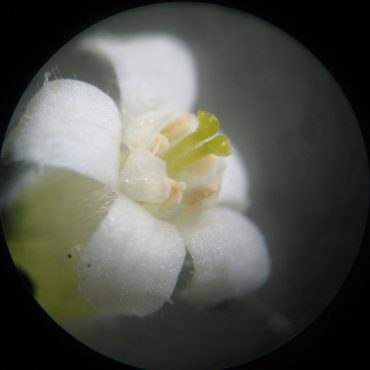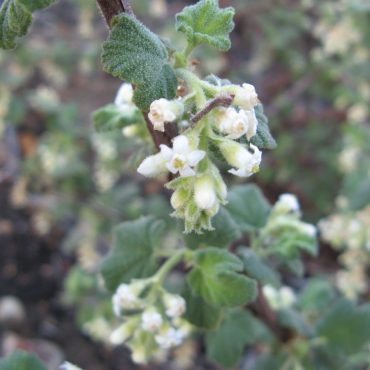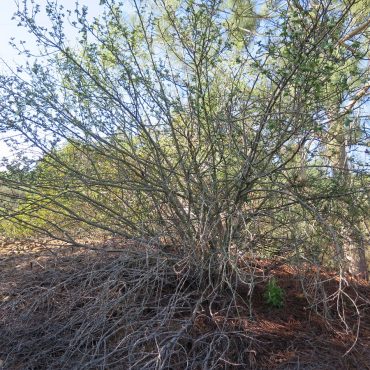Winter currant is a deciduous shrub with upright, spreading branches. It may reach 8 or 9 feet (2.5 or 3 m) in height. All parts of the plant are glandular-hairy and pleasantly aromatic. The stems are green when young, becoming chestnut with age; the older bark sheds in plates giving a shaggy appearance. The leaves occur in clusters from short branchlets along the branches. Leaves are thickened and crinkled, usually 1 to 1.5 inches (2.5 – 4 cm) long. Leaves are rounded with short petioles and palmately veined with three to five broad, shallow lobes. Leaves are green and velvety on top, white-woolly below. They resemble the leaves of mallow or geranium, but the plants are not related.
The small, bisexual flowers occur in clusters of 10-25 that hang from the branchlets. One flower is only 2/8 – 3/8 inch (0.6 – 0.8 cm) across. The base of the flower (hypanthium) is not flat, as in most flowers, but curved up into a deep cup, the inner surface of which produces copious nectar. The five white sepals arise from the top edge of the hypanthium, spreading and recurving with age and resembling petals. The five smaller, white petals are somewhat triangular in shape. They stand erect, forming a central crown around the stamens and pistil. There are five stamens that extend to the throat of the flower. The single pistil has a mostly-inferior, one chambered ovary with a forked style, each branch with a knobbed stigma. Winter current blooms for a rather short period between November and March.1
The withered flower persists on the developing fruit. The mature fruit is a small berry, less than 1/2 inch (1 cm) wide, containing numerous small seeds. The maturing berry changes from green to yellow to red and finally purple. It has a waxy coating and is covered with glandular, purple hairs.

